“Be the first mover, and pick any corner.”
I have 2 young boys, and the elder one at 4 years old loves playing the Tic Tac Toe game. He would often chase me to play the game with him when I returned home from work. I remembered, in one of our earliest games about 3 months ago, he asked me on the rules of winning.
I told him there were just 3 simple rules to remember:
- Rule 1: Be the first mover and pick the center.
- Rule 2: In the next move, try to connect to one of the neighboring squares as soon as possible.
- Rule 3: Keep a lookout for the opponent’s move.
He asked me why, and I explained to him that the center was the only one place that would connect to all of the neighboring squares. So, by taking that first, one would have a better chance to connect to the second square sooner and later form 3 squares in a row, horizontally, vertically, or diagonally to win the game.
I thought these 3 rules were simple and intuitive, and I had been using them since young to win most of the games (or had at least a draw). I hardly lost any games for Tic Tac Toe in my childhood days if my memory does not fail me.
How terribly wrong I was!
One day, he initiated the game as usual, and to my surprise, he drew a circle at one of the corners. I laughed and told him that he could reselect the center square. But he declined repeatedly, no matter how many chances I gave to him.
“You’re not following rule 1, and Daddy is going take the center,” I said. “Go ahead, please!” he smiled.
“Now, with my cross at the center, you’ll only have 2 neighboring squares to connect to. Your chance of winning is low now,” I said to him.
He surprised me further with his next move by drawing a circle in another corner. Both the circles are not beside each other.

“No, you’re not following rule 2 — I let you draw again.” Once again, he refused to do so.
“Well, well, someone is going to lose”, I said to him and drew my cross at one of the corners without much thinking while looking at him.
“Really huh? Hahaha,” he laughed excitedly as he drew his circle at the last corner. My jaws began to drop as I realized that regardless of my next move, my son would win the game.

As an Agile practitioner, I did my retrospective a few hours after the game to reflect on what had gone wrong and what I could do better next time.
While my son did not follow my rules 1 and 2, I did not observe my own rule 3 as well. Had I done so and picked any of the remaining squares other than the corners, it would be a draw (see scenario 1 below). So, in that game, none of my so-called “3 Golden Rules” was followed.
I further analyzed my son’s moves and found that by taking the corner first, one would never lose in any situation. Not a single one.
So instead of 3 rules, there is only 1 to remember — picking the corner first, and the chances of winning are so much higher. Simpler rule, and yet more powerful. No wonder Leonardo Da Vinci said,
“Simplicity is the Ultimate Sophistication.”
Let me illustrate this — there are only 3 possible scenarios after the circle is at a corner. Out of the 3 scenarios, 2 would always lead to a win for the circle, and the last one, either a draw or win.
Scenario 1: Cross is at the center (my game with my son)
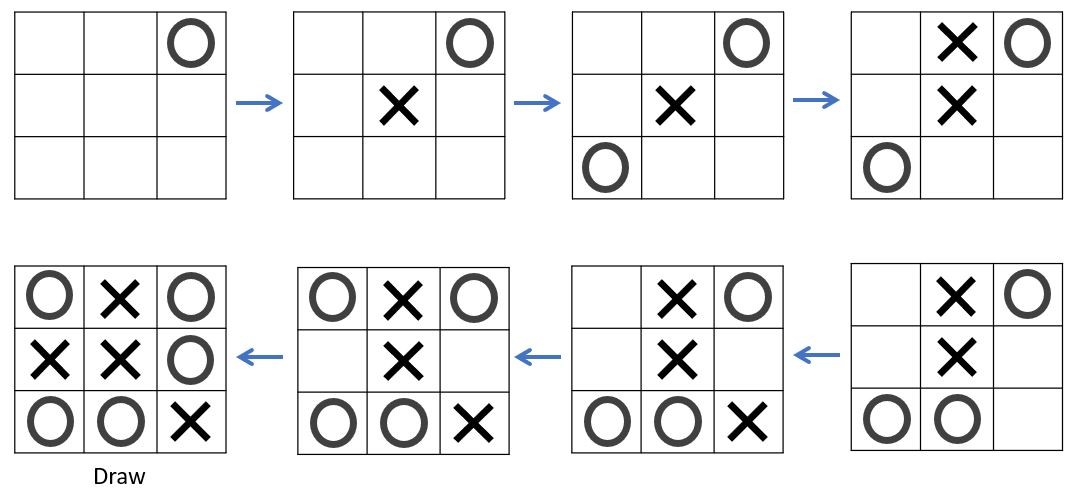
Scenario 2: Cross is not at center but at corner (1 of the 3 squares in grey)
Regardless of where the cross is being placed at, the circle will win the game.
Cross is at the 1st corner
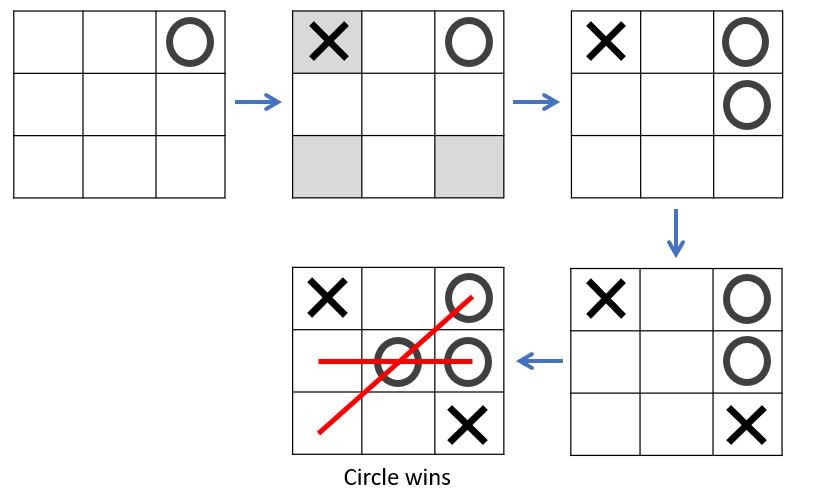
Cross is at the 2nd corner
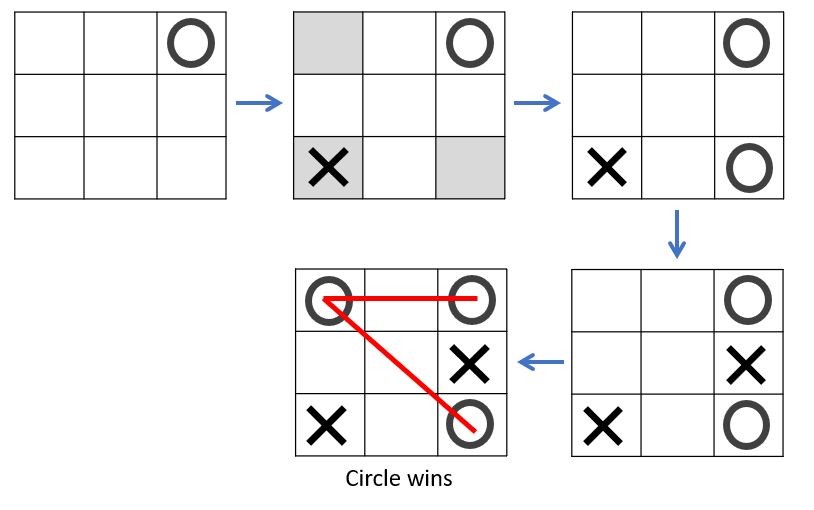
Cross is at the 3rd corner
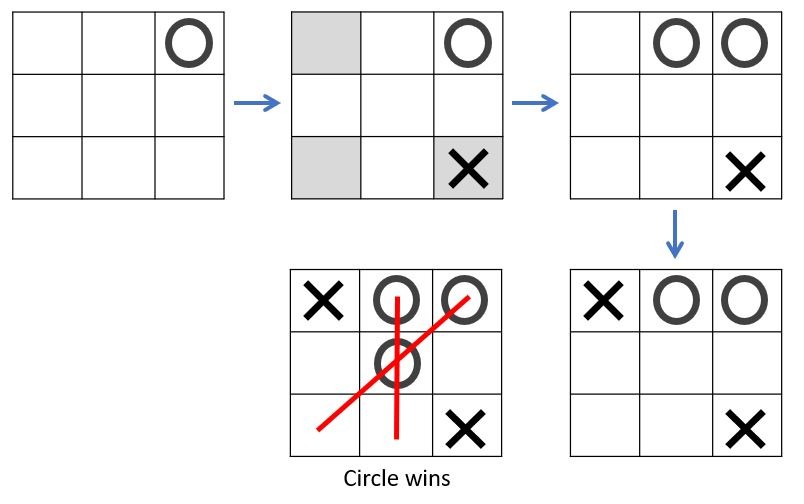
Scenario 3: Cross is neither at center nor at corner (1 of the 4 squares in grey)
Similarly, the circle will win no matter where the cross is.
Cross is at the 1st edge
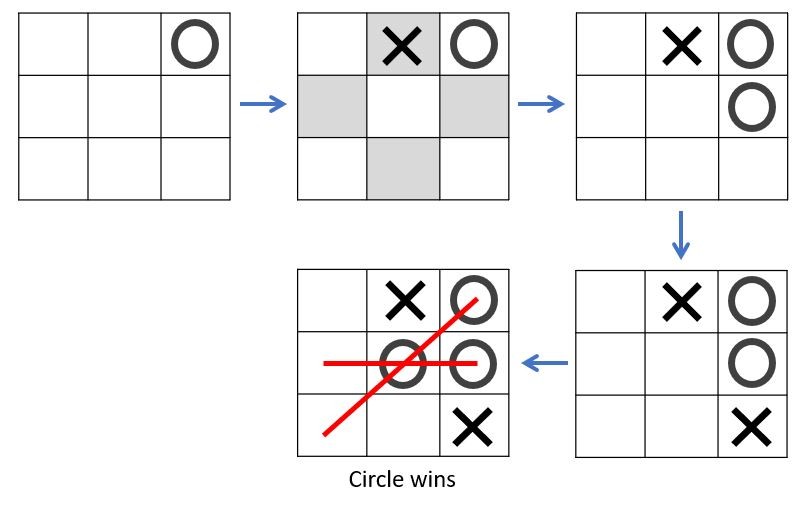
Cross is at the 2nd edge
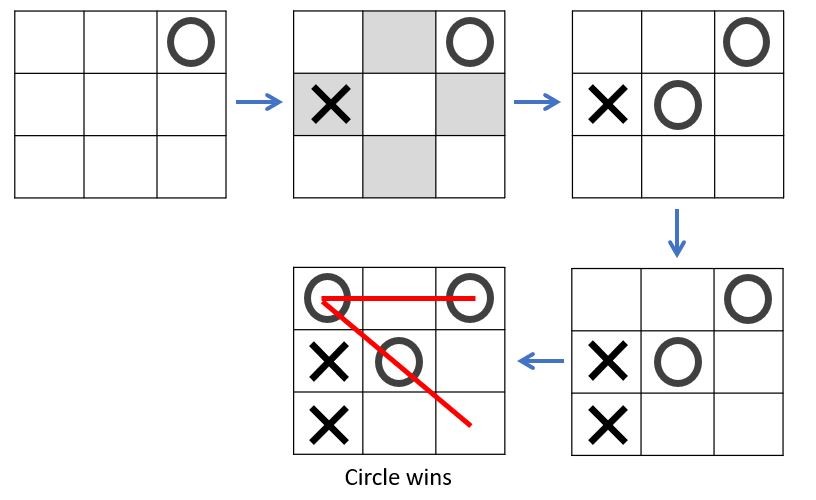
Cross is at the 3rd edge
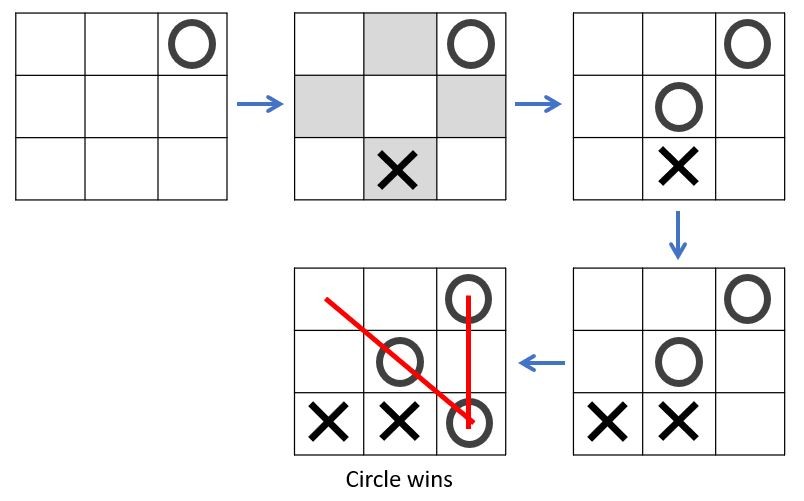
Cross is at the 4th edge
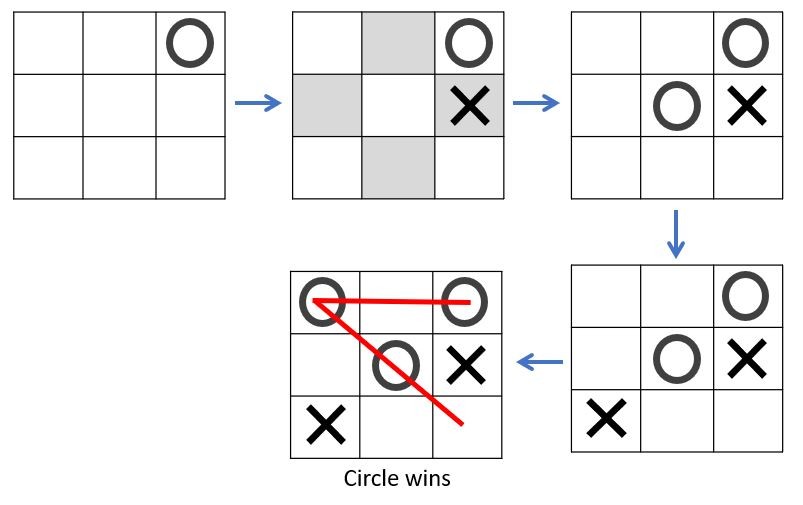
So, the 3 rules are now simplified as follows:
Be the first mover, and pick any corner.
I further self-reflected on the larger things in life and realized that we often made the same mistake.
Be it individuals or organizations, we often have our own mindsets or rules that we believe are the “right way to go,” and stubbornly impose them on others, especially those who are more junior or below us, using our authority rather than persuasion.
How often have we heard these — “Just follow my instructions,” “This is the company culture, and you need to fit into it,” or “I heard …” but are not actually listening?
How often do we dismiss the alternate views from the ground when they just simply do not appear to conform to the established rules, instead of exploring these diverse perspectives and different ways of doing things?
These days, my son would feel that our Tic Tac Toe games were getting boring as they would always be ended up as draws. A few weeks ago, we have since switched to playing the Snakes and Ladders game instead.
Maybe in the near future, I’ll write an article on Snakes and Ladders.
Note: The opinions expressed here are solely the author’s and written in his personal capacity. They do not reflect the opinions of his current employer or any other organization or individual.
 CHAN Chee Siong is a Cloud Solutions Architect based in sunny Singapore with many years of IT experience. He has a reputation for successfully integrating complex solutions for clients and building and maintaining strong relationships with them. Certified in multiple Cloud platforms, including AWS and Google Cloud, he also enjoys mentoring colleagues in their own cloud journey. In his free time, he is passionate about constructing Nanoblocks and volunteering for various organizations.
CHAN Chee Siong is a Cloud Solutions Architect based in sunny Singapore with many years of IT experience. He has a reputation for successfully integrating complex solutions for clients and building and maintaining strong relationships with them. Certified in multiple Cloud platforms, including AWS and Google Cloud, he also enjoys mentoring colleagues in their own cloud journey. In his free time, he is passionate about constructing Nanoblocks and volunteering for various organizations.
The opinions expressed here are solely the author’s and written in his personal capacity. They do not reflect the views of his current employer or any other organization or individual.
This article was originally published in December 2022 on LinkedIn and submitted as an editorial contribution. TechNode Global INSIDER publishes contributions relevant to entrepreneurship and innovation. You may submit your own original or published contributions subject to editorial discretion.
Migrating to Cloud is like playing a game of Snakes and Ladders
Featured image: Flickr

